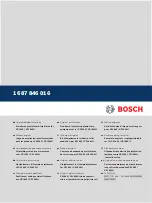
178 Configuring Directors
The following sections tell how to identify ports on SAN Director 2/128 and 4/256 SAN Director, and
how to identify ports for zoning commands.
By slot and port number
The port number is a number assigned to an external port to give it a unique identifier in a switch.
To select a specific port in the SAN Director 2/128, and 4/256 SAN Director models, you must identify
both the slot number and the port number using the format
slot number
/
port number
. No spaces are
allowed between the slot number, the slash (/), and the port number.
The following example shows how to enable port 4 on a blade in slot 2:
By port area ID
The relationship between the port number and area ID depends upon the PID format used in the fabric:
•
When Core PID format is in effect, the area ID for port 0 is 0, for port 1, it is 1 and so forth.
When using Core PID mode on the SAN Director 2/128 configured with two domains, the area IDs for
both logical switches (domains) range from 0 to 63. This means that both logical switch 0 and logical
switch 1 have a port that is referenced with area ID 0.
For 32-port blades in the 4/256 SAN Director (using FC4-32), the numbering is contiguous up to port
15; from port 16, the numbering is still contiguous, but you must add 128 to each port number. For
example, port 16 in slot 1 has a port number and area ID of 128; port number 15 has a port number
and area ID of 15.
For 48-port blades in the 4/256 SAN Director (using FC4-48), the numbering is contiguous up to port
15; from port 16 the numbering is still contiguous, but you must add 128 to each port number. For
example, port 48 in slot 1 has a port number and area ID of 176; port number 48 has a port number
and area ID of 48.
•
When Extended-edge PID format is in effect, the area ID is the port number plus 16 for ports 0 to 111.
For port numbers higher than 111, the area ID wraps around so that port 112 has an area ID of 0, and
so on. Each 64-port logical switch (domain) has area IDs ranging from 16 to 79. Port numbers higher
than 128 are mapped directly to the core PID.
For details about port area IDs in Extended-edge PID mode, see
Changing to extended edge PID
format
, page 388.
•
If you perform a port swap operation, the port number and area ID no longer match.
To determine the area ID of a particular port, enter the
switchShow
command. This command displays
all ports on the current (logical) switch and their corresponding area IDs.
By index
With the introduction of 48-port blades, the Index was introduced. Unique area IDs are possible up to 255
areas, but beyond that there needed to be some way to ensure uniqueness.
A number of fabric-wide databases supported by Fabric OS (including ZoneDB, Secure FOS DDC policies,
the ACL DDC, and Admin Domain) allow a port to be designated by the use of a “D,P” (Domain, Port)
notation. While the “P” component appears to be the port number, in up to 255 ports it was actually the
area
assigned to that port.
If the PID format is changed from Core to Extended-edge or vice-versa, the “P” value for ports 0-127 also
changes. If two ports are changed using the portSwap command, their respective areas and “P” values are
exchanged.
For ports that are numbered above 255, the “P” value is actually a logical index. The existing
index-to-area_ID mapping for the first 256 ports in a switch is kept, and add values equal to the physical
port number for the new FC4-48 ports.
The first 256 ports continue to have an index value equal to the area_ID assigned to the port. If a switch is
using Core PID format, and no port swapping has been done, the port Index value for all ports is the same
as the physical port numbers. Changing the PID format will change the index values as well as the area_ID
switch:admin>
portenable 2/4
Summary of Contents for AE370A - Brocade 4Gb SAN Switch 4/12
Page 18: ...18 ...
Page 82: ...82 Managing user accounts ...
Page 102: ...102 Configuring standard security features ...
Page 126: ...126 Maintaining configurations ...
Page 198: ...198 Routing traffic ...
Page 238: ...238 Using the FC FC routing service ...
Page 260: ...260 Administering FICON fabrics ...
Page 280: ...280 Working with diagnostic features ...
Page 332: ...332 Administering Extended Fabrics ...
Page 414: ...398 Configuring the PID format ...
Page 420: ...404 Configuring interoperability mode ...
Page 426: ...410 Understanding legacy password behaviour ...
Page 442: ...426 ...
Page 444: ......
Page 447: ......
















































